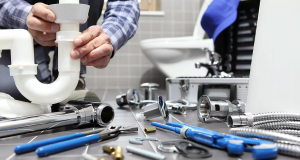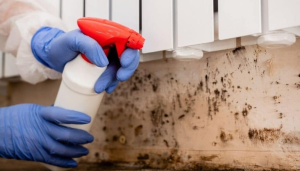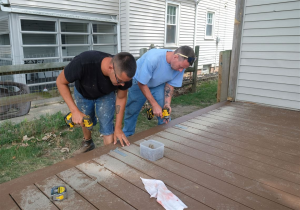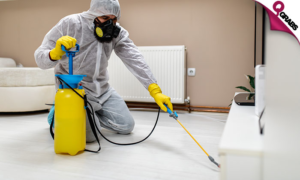Paving is the construction of flat, sturdy surfaces that can be made from a variety of materials like concrete, asphalt, bricks and stones. It’s used to build walkways, roads, driveways and parking lots.
Before paving begins, contractors install a stable base layer. This is usually composed of crushed stone or gravel and sand. Contact a Paving Companies Charleston SC now!

Curb appeal is a term that often comes up when discussing real estate, with property value and saleability dependent on how well a house looks from the street. Whether it’s fresh paint, a well-kept lawn or eye-catching decorations, the overall appearance of a home is important when trying to sell or evaluate it for potential purchase. It’s often the first impression that buyers get of a home, and one that they can quickly judge and compare to others on the market.
If a yard and exterior of a home look unattractive or unkempt, potential buyers will likely be turned off before they even step inside. However, there are many inexpensive improvements that can be made to a yard and the exterior of a home to increase its curb appeal. For example, mowing the lawn regularly, trimming shrubbery and removing weeds can all make a big difference. These kinds of things can help a home stand out from the rest, and can result in higher offers when it is time to sell.
Another way that curb appeal can be enhanced is through the use of paving materials. Whether it is asphalt paving, concrete paving or bricks and stones, these materials offer both durability and visual appeal. Paving options are also available in a variety of shapes, colors and patterns to suit any style or aesthetic preference. Interlocking pavers are a popular choice for homeowners as they add a sophisticated touch, while allowing for flexibility in design.
Adding pavers to the driveway, sidewalks or other areas of a home not only helps to create an attractive visual, but can also improve functionality and safety. A professional paving contractor will be able to advise on the best type of paving for a specific area and provide options that match the existing aesthetic of the home. A paved driveway or walkway can be the focal point of a home’s front yard, and by using contrasting pavers to complement a color scheme, the look can be enhanced further.
Not only does a professionally installed and maintained driveway or paving system enhance a home’s curb appeal, but it can also raise the property’s value. A well-maintained, aesthetically appealing residential property is more likely to sell for a higher price than an unattractive or rundown exterior. This is why it is so important to keep up with maintenance and repairs when necessary, in order to maintain a high level of curb appeal.
Durability
Paving is a construction process that involves covering an existing surface with a layer of durable material. The result is a strong, long-lasting structure that is safe for vehicles, pedestrians, and cyclists to use. This type of infrastructure is critical for facilitating the movement of people and goods, promoting economic growth, and ensuring the safety of citizens. Paving uses a variety of materials, including asphalt, concrete, and bricks, to create roadways, walkways, parking lots, and more. While each material has its pros and cons, asphalt is a popular choice due to its cost-effectiveness and durability.
Several factors can influence an asphalt mixture’s longevity, including fatigue, rutting, and moisture damage. However, the most significant factor is in-place pavement density. Studies show that increasing in-place density by just a few percent can extend the life of an asphalt pavement by 10 to 30 percent.
This can be achieved by properly mixing, laying, and compacting the material. It is also important to ensure that the mix is heated enough to remain flexible throughout its lifetime. The addition of chemical admixtures can also improve the performance of an asphalt mixture and enhance its durability.
Asphalt durability is particularly important for high-traffic or heavy-load routes. These types of roads are prone to rapid deterioration if paving methods and materials are not optimized for load-bearing capacity.
Enhanced pavement durability can reduce the need for costly maintenance and repairs. This can save taxpayer dollars and reduce traffic disruptions. Additionally, long-term analysis shows that investing in more durable materials results in greater savings over time.
For example, a high-quality aggregate and binder combination can increase the dynamic modulus of an asphalt mixture. This value reflects the ability of the material to resist damage from vehicle loading. In general, higher-grade materials have higher dynamic moduli values than lower-grade ones.
In addition to improving the longevity of asphalt, research into sustainable materials and innovative reinforcement techniques is crucial. For instance, using modified binders that are more environmentally friendly and biodegradable can help to minimize the impact of asphalt production on the environment.
Safety
When working with asphalt, proper safety precautions must be taken. This includes proper clothing, equipment, and training. Asphalt is a thick, black petroleum product that is mixed with aggregates like stone, sand, and gravel to create a sturdy surface suitable for roads and driveways. When improperly handled, it can cause serious injuries to employees. This is why paving companies must follow strict safety practices.
Asphalt has a high heat content that can burn the skin. Workers must wear gloves to prevent burns. Additionally, the material can absorb toxins into the body, causing health problems. Asphalt fumes can also irritate the eyes. If the eye becomes irritated, workers should immediately locate and use the on-site eyewash station. Long-term exposure to asphalt fumes can lead to respiratory illnesses and even lung cancer.
The job site must be secured from passing motorists. This is accomplished by using barricades, signs, and lighting. In addition, the workers must be properly trained to operate machinery. Despite the numerous safety features built into today’s machines, human error too often overrides mechanical safeguards.
A paving company’s safety program should include proper equipment training. The training should cover machine operation, emergency stop buttons, and other relevant information. Additionally, the safety program should include a routine review of all commercial vehicles and trailers to ensure they are in compliance with FMCSA standards.
Paving professionals should also be trained to recognize potential hazards. This includes understanding how to identify and correct lane-shoulder drop offs that can result in a fatal accident. In addition, the professionals should know how to adjust their equipment for different site conditions.
These adjustments may involve changing the direction of travel or the speed of travel. They may also require extra attention from the paver operator when navigating transitions for intersections, driveways, and changes in longitudinal elevation or slope. For example, a site condition where the foreslope/embankment or ground surface has a steeper slope than the Safety EdgeSM should be discussed in the contractor’s quality control plan or pre-paving meeting to determine how this will be resolved. It may be necessary to keep the Safety EdgeSM lowered or move it up to a higher position in these cases.
Maintenance
Paving is the process of building flat, sturdy surfaces using a variety of materials. Common paving materials include concrete, asphalt, bricks, and stones. Paving is used to build walkways, driveways, parking lots, and roads. Paving offers many benefits, including durability, aesthetic appeal, and ease of maintenance.
To keep a paved surface looking new, it is important to maintain the underlying foundation. Regular inspections should be conducted to detect and repair any damage or cracking. In addition, a regular cleaning program should be implemented to remove dirt and other debris from the surface. A high-quality sweeping machine with a dust control attachment should be used to avoid scratching the surface.
During the summer, a broom or blower should be used to sweep away accumulated leaves, branches, and mulch. Keeping the area surrounding pavers free of organic plant matter will help prevent soil compaction and weed growth that can shift the paving stones over time. An occasional rinsing with a garden hose is recommended, but care should be taken not to use a high-pressure spray setting, which could damage the paving stone surface or dig up the joint sand.
In addition to performing regular maintenance, it is also important to note corrective maintenance needs when they arise. Noting and addressing these issues early on will extend the lifetime of the paving material and improve overall operational efficiency.
A centralized maintenance request management system is an effective way to track and manage a company’s maintenance requests. This allows the maintenance department to review and prioritize requests, and it ensures that all necessary resources are available when needed.
Choosing the right paving material is an essential decision for any construction project. Both asphalt and paving stones have their advantages, but it is important to weigh the pros and cons of each option carefully. While asphalt is cost-effective and durable, it does not provide the same level of aesthetic appeal as paving stones. It is also less flexible than paving stones, making it more difficult to construct intricate designs. A paving stone contractor can recommend the best material for your specific project and budget.








